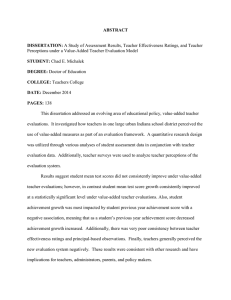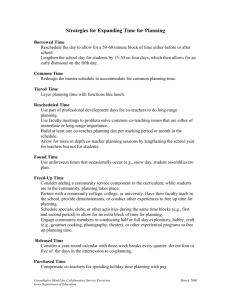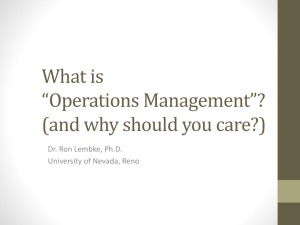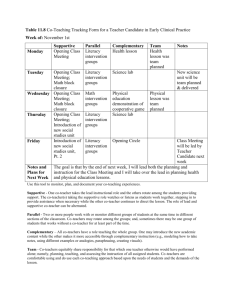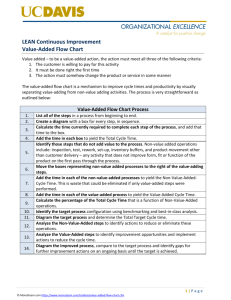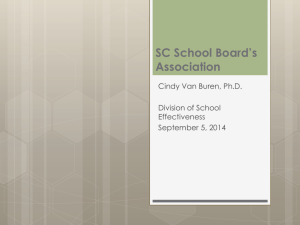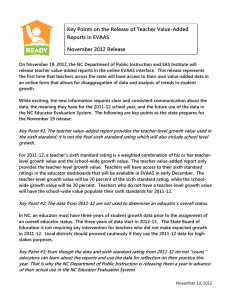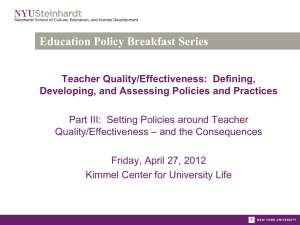Co-Teacher Value-Added Models: Analysis & Simulation
advertisement
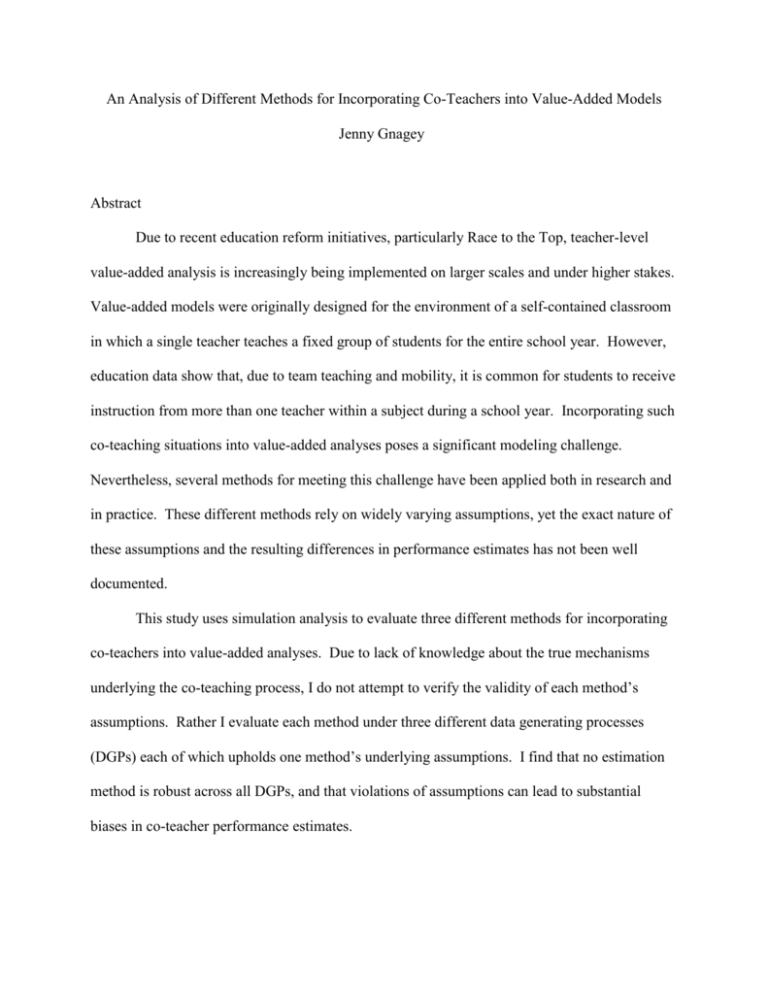
An Analysis of Different Methods for Incorporating Co-Teachers into Value-Added Models Jenny Gnagey Abstract Due to recent education reform initiatives, particularly Race to the Top, teacher-level value-added analysis is increasingly being implemented on larger scales and under higher stakes. Value-added models were originally designed for the environment of a self-contained classroom in which a single teacher teaches a fixed group of students for the entire school year. However, education data show that, due to team teaching and mobility, it is common for students to receive instruction from more than one teacher within a subject during a school year. Incorporating such co-teaching situations into value-added analyses poses a significant modeling challenge. Nevertheless, several methods for meeting this challenge have been applied both in research and in practice. These different methods rely on widely varying assumptions, yet the exact nature of these assumptions and the resulting differences in performance estimates has not been well documented. This study uses simulation analysis to evaluate three different methods for incorporating co-teachers into value-added analyses. Due to lack of knowledge about the true mechanisms underlying the co-teaching process, I do not attempt to verify the validity of each method’s assumptions. Rather I evaluate each method under three different data generating processes (DGPs) each of which upholds one method’s underlying assumptions. I find that no estimation method is robust across all DGPs, and that violations of assumptions can lead to substantial biases in co-teacher performance estimates.

